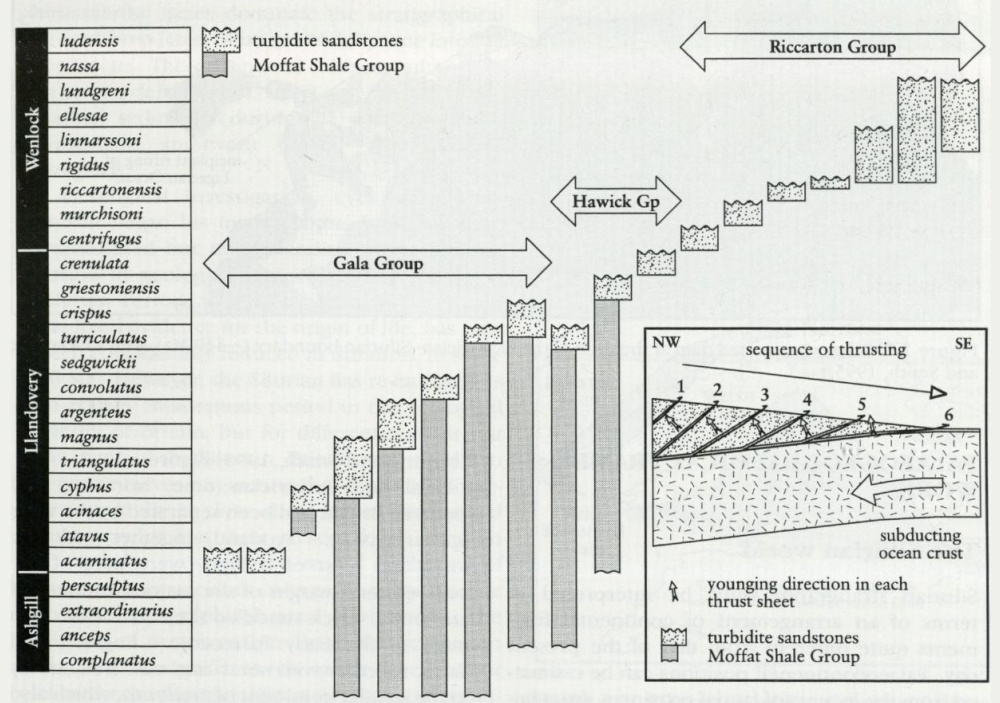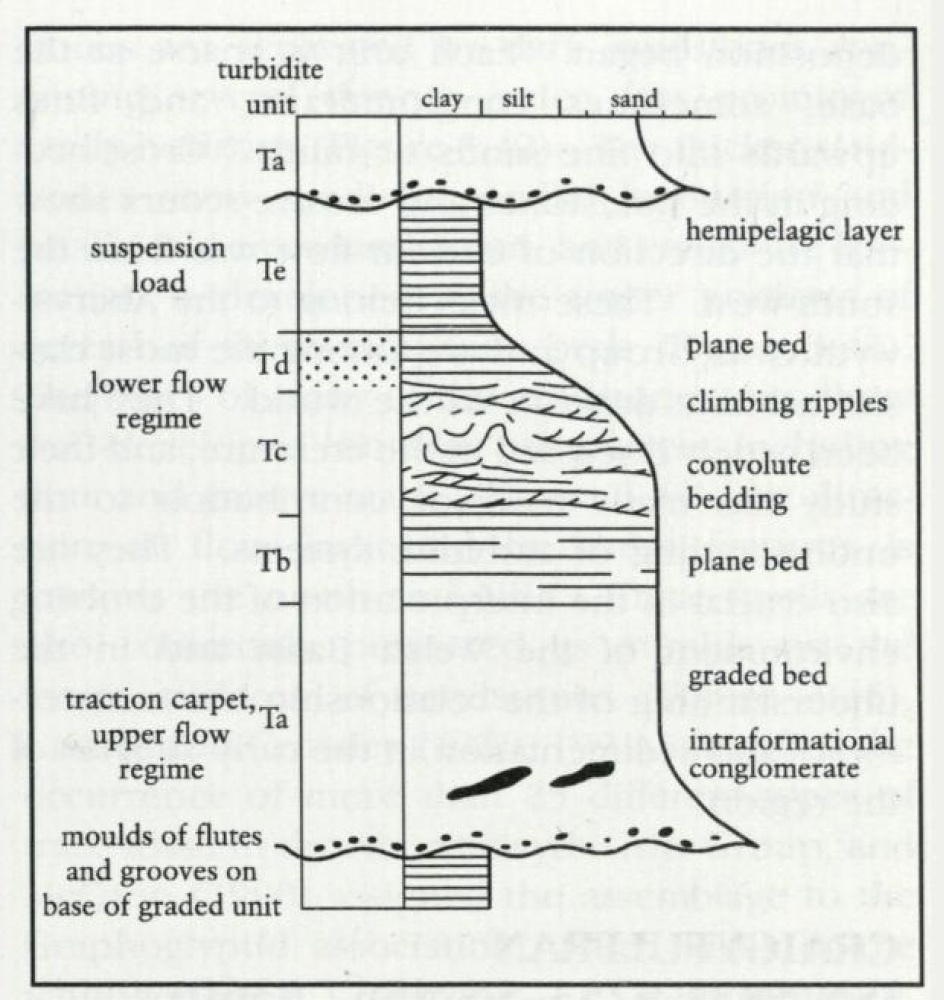Grieston Quarry
Introduction
Grieston Quarry lies 1.6 km WSW of Innerleithen, Peeblesshire, within an area of upper Llandovery greywackes that were referred to the
The quarry is the type locality for Monoclimacis griestoniensis (Nicol, 1850), the index species of the Telychian griestoniensis Biozone, and for other graptolites including Pristiograptus nudus (Lapworth, 1880c), Monograptus drepanoformis Toghill and Strachan, 1970, and Glyptograptus nebula Toghill and Strachan, 1970. It is also the type locality for the trace fossil Dictyodora tenuis (M'Coy, 1851a).
Description
The exposure in the quarry consists of 43 m of shales and greywackes, dipping 60–65° to the north-west
Graptolites recorded by Toghill and Strachan (1970) from 3.7 m above the base of the section include Monograptus discus (restricted to this horizon), Monoclimacis griestoniensis (only common at this horizon), Monograptus priodon and Oktavites spiralis. The micaceous greywackes found as loose blocks contain Monograptus drepanoformis, Pristiograptus nudus, Glyptograptus nebula (all restricted to this material), M. priodon, O. spiralis, and rare M. griestoniensis, among others. These faunas are indicative of the griestoniensis Biozone, of late Telychian age.
Tail spines of the phyllocarid Ceratiocaris also occur (Trewin, 1979; Benton and Trewin, 1980), and tool marks produced during the transport of these rigid, three-pronged structures were described by Trewin (1979). Benton and Trewin (1980) also documented the trace fossil assemblage, which is dominated by meandering burrows of Dictyodora, together with straight traces referred to Caridolites by Nicholson (1873). The ichnofauna is a typical deep-water mud association assignable to the Nereites ichnofacies.
Interpretation
The fine-grain size of most of the greywackes, the dominance of mud, and the sedimentary structures, indicate a distal environment on a turbidite fan (Trewin, 1979; Weir, 1992). The beds represent units Tcde of the Bouma (1962) sequence
The graptolite fauna at Grieston Quarry is the youngest known in the area. The absence of Monoclimacis crenulata and Monograptus marri was taken by Toghill and Strachan (1970) to indicate that the highest part of the griestoniensis Biozone is not represented in the quarry. To the east and south-east, including the network site at Thornylee, graptolitic horizons within the
The presence of relatively young Telychian rocks in the northern part of the Southern Uplands is an anomaly, and the implications remain a topic for future research. One possibility is that these strata were deposited in an isolated perched basin above the developing Southern Uplands complex (Weir, 1992).
Conclusions
This is a classic and important graptolite locality in the Southern Uplands, with a diverse fauna of local and international importance for biostratigraphy and correlation. It is the type locality for the biozonal graptolite species Monoclimacis griestoniensis. The quarry also provides a representative section in the Telychian greywackes of this part of the Southern Uplands; these are otherwise poorly exposed.




